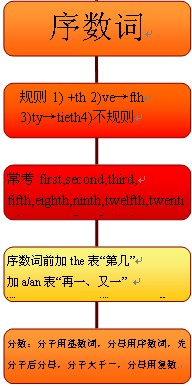At the beginning of the twentieth century, many people thought that the Americanfamily was falling apart.A century later, we know that this was not the case. However,although the family is still alive in the United States, its size and shape were very different100 years ago.
In the late 1800s and early 1900s, there were mainly two types of families in theUnited States: the extended and the nuclear. The extended family usually includesgrandparents, parents, and children living under the same roof. The nuclear familyconsists of only parents and children.
Today there are many different kinds of families. Some people live in “traditional” families, that is, a stay-home mother, a working father, and their own biologicalchildren. Others live in two-paycheck families, single-parent families, adoptive or foster,families, blended families (where men and women who were married before marry againand combine the children from previous marriages into the new families),childlessfamilies, and so on.
What caused the structure of the family to change? In the early 1900s the birthratebegan to fall and the divorce rate began to rise. Women were suddenly choosing to go tocollege and take jobs outside the home. In the 1930s and 1940s, many families faced seriousfinancial, or money problems during the Great Depression, when many people lost theirjobs. During World War II(1939-1945),5 million women were left alone to take care oftheir homes and their children. Because many men were at war, thousands of these "war widows" had to go to work outside their home.
During the next ten years, the situation changed. There were fewer divorces, andpeople married at a younger age and had more children than the previous generation. It wasunusual for a mother to work outside the home during the years when her children weregrowing tip. Families began leaving cities and moving into single-family homes in thesuburbs. The traditional family seemed to be returning.
In the years between 1960s and 1990s, there were many important changes in thestructure of the family. From the 1960s to the early 1970s, the divorce rate doubled andthe birthrate fell by half. The number of single-parent families tripled, and the number ofcouples living together without being married doubled again. In fact, the single-parenthousehold, once unusual, has replaced the "traditional" family as the typical family in theStates. If we can judge from history, however, this will probably change again in thetwenty-first century.
The Changes of the American Family
Main comparisons
| Contexts
|
Different___1____
| There were two __2___ types of families in the past, ___3____, the extended and the nuclear.
|
Nowadays __4___types of families can be seen than before.
|
Changes in different ___5_____.
| In the 1900s and 1940s
| Many of the women had to work outside due to the __6___of money., thus causing the fall of __7__and the rise of divorce rate.
|
In the 1950s
| Divorce rate slided and there were more children . The families tended to be ___8___ again.
|
本题信息:英语完形填空难度一般 来源:未知
本试题 “At the beginning of the twentieth century, many people thought that the Americanfamily was falling apart.A century later, we know that this was not...” 主要考查您对 序数词 等考点的理解。关于这些考点您可以点击下面的选项卡查看详细档案。
序数词的概念:
表示顺序的数称为序数词。如:first, second, third, fourth。 序数词的构成与用法:
1、序数词的构成:
①一般来说,是由相应的基数词加词尾th构成。
例:four+th→fourth
six+th→sixth
seven+th→seventh
ten+th→tenth
②下面这些基数词在变为序数词时,有特殊的变化。
例:one→first
two→second
three→third
five→fifth
eight→eighth
nine→ninth
twelve→twelfth
③十位整数序数词的构成方法是将基数词的词y变成i,然后再加eth。
例:twenty→twentieth
thirty→thirtieth
forty→fortieth
ninety→ninetieth
④两位或两位以上的基数词变成序数词时,仅将个位数变成序数词。
例:twenty-one→twenty-first
thirty-five→thirty-fifth
a hundred and fifty-three→a hundred and fifty-third
2、序数词的用法:
①序数词在使用时,一般加上定冠词。
例:the first book
the second floor
the third day
the fourth week.
②序数词在多数情况下都用作定语,有的也可以作表语、主语和宾语。
例:The may1st is Labour Day. 五月一日是劳动节。
My room is on the second floor. 我的房间在二楼。
The first is larger than the secon.(主语)第一个比第二个大。
Read the book from the first.(宾语)从开头读这本书。
You'll be the sixth to write.(表语)你将是第六个写的。
③序数词的前面可以加上不定冠词,用来表示“再一”,“又一”的意思。
例:You may have a third try. 你可以第三次尝试。 序数词知识体系:

约数的表达方法:
用tens/dozens/scores/hundreds/thousands/millions of 表示“几十、几百、上千、成千上万”等。
如:The boy bought dozens of pencils.
Thousands of people died in the earthquake.
注意: (A):dozen, score, hundred, thousand, million等表示确切数量时,不用复数。
如:five dozen (of) eggs 五打鸡蛋
hree hundred people 三百个人
分数词的构成和用法:
1)分数词构成法:
分数词(FractionalNumerals)由基数词和序数词构成,基数词代表分子,序数词代表分母。除了分子为1的情况下,序数词都要用复数形式:
如:1/4:one-fourth
5/9:five-ninths
2/3:two-thirds
17/5:three and two-fifths
7/12:seven-twelfths
379/8:forty-seven and three-eighths
此外还有下面表示法:
如:1/2:a(one) half
1/4:a(one) quarter
3/4:three-quarters
9/4:two and a quarter
3/2:one and half
31/4:seven and three quarters
与“At the beginning of the twentieth century, many people th...”考查相似的试题有:
|